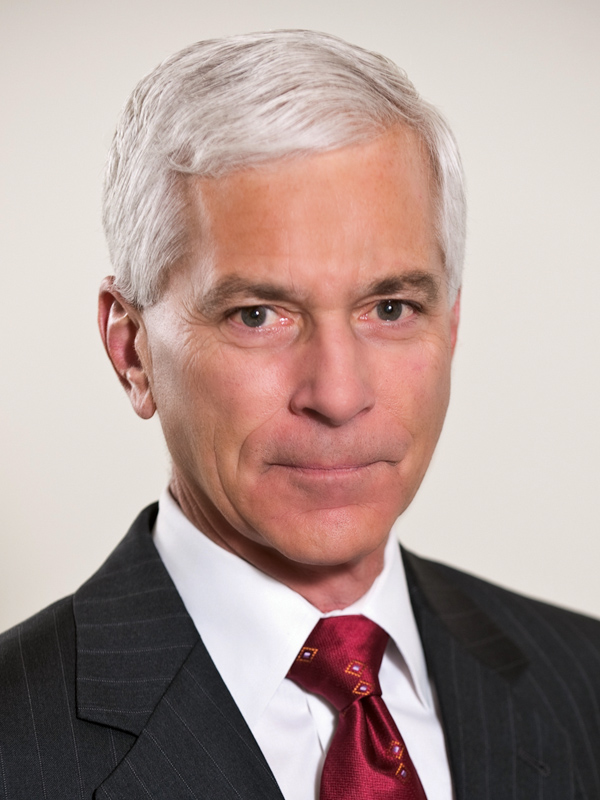
is president and CEO of NACUBO.
jwalda@nacubo.org
To the casual observer, our educational missions may convey a rather staid image, one in which colleges and universities repeat a regular and predictable cycle—offering the same courses, majors, and experiences to each succeeding class—while fundamentally resisting change.
As leaders of our institutions, we recognize that higher education does routinely honor its traditions. Yet, because we are in the “knowledge business,” at heart we are always exploring new options and seeking better ways to provide what our students need. We are constantly motivated to change from within, a process that seems embedded in our DNA.
Now, however, the pace of discovery and transformation on our campuses is clearly accelerating. At the same time, a confluence of external forces is exerting additional pressure—for example, the changing expectations of our graduates, increasing international competition, and differing perceptions of our institutions by external stakeholders unfamiliar with higher education’s ongoing evolution. Factor in the reality of some five years of the recession era’s constrained resources and a transitioning global economy that requires educating an increasing proportion of the population, often in new disciplines—and you’ve got good reason to break with tradition.
This clash of economic crisis and educational demand has served as a stimulant, even as the stuff of innovation—the extraordinarily creative solution that arises when a would-be-crushing circumstance pushes us toward efforts that we never before felt able to accomplish, or even consider. In the midst of some of the worst economic conditions most of us are likely ever to experience, we have also witnessed remarkable evolution in what we teach and how we teach it.
Gathered in These Pages
To place in a broader context the critical need for colleges and universities to keep pace with influential trends, Business Officer devotes this single-theme issue to exploring five major forces that continue to drive innovations in our community. We’ve organized the magazine around what we’ve labeled drivers of innovation: Changing Curricular Needs; Stretching Campus Boundaries; Global Challenges; Public Perception; and Changing Demographics.
Each section opens with a thought-provoking essay, followed by several types of feature treatments that delve into and examine the related angles and implications. Taken together, the forces that are impelling change will affect the ways we lead our institutions as they evolve to serve new generations, prepare the population for a rapidly shifting economy, and brief higher education leaders on how best to make our case to legislators and the public at large.
“This is a data-driven, supercomputer-powered, Web-enabled, and globally interconnected world,” says Shirley Anne Jackson, president of Rensselaer Polytechnic Institute, in the essay that opens the Changing Curricular Needs section. “As leaders, we must understand this new world if we are to provide an environment that helps our students thrive, both today and tomorrow. And, we must transform higher education for a new era.”
A Different World
The five forces identified in this issue are by no means exhaustive, but they illustrate the critical imperative for colleges and universities to accelerate their adaptations and innovations.
In this new era, says Gretchen M. Bataille, until recently senior vice president, Division of Leadership and Lifelong Learning at the American Council on Education, “Today’s college student does not resemble the stereotypical freshman in the minds of the public. On the contrary, nearly 75 percent of students now on college campuses are nontraditional. Right now, we seem to be experiencing a disconnect between the rapidly altered demographic reality and the ability of our higher education system to accommodate the changes.” Education attainment “has become the rallying cry” for higher education associations and other organizations.
But public confidence in higher education is wavering. “More people are calling into question the value proposition of higher education,” says David Maxwell, president of Drake University in Des Moines, in another essay. “They are beginning to ask, ‘Is a college degree worth it?’ We must have honest and meaningful answers to that question. We also need to find ways not only to inject ourselves into the public discourse, but to reclaim the public discourse so people are talking about the things that really matter, the things that really make a difference.”
The Power of Association
Equipping business officers for leadership in a different world, identifying new challenges so we may be prepared to face them, advocating for policies that advance higher education, and helping to communicate the value of higher education in our society—NACUBO continues to provide these services as it has done from its earliest years.
And, it’s no coincidence that “Driving Innovation” is the theme of this year’s annual meeting in Indianapolis, July 13–16, where you’ll find more than 80 sessions designed to illuminate current issues and prime you for leadership on your campus.
While the five forces you’ll read about here are beyond our control, the ways we respond to them are not. In fact, facing pressure from societal fluctuations is nothing new for us. Through centuries of stability and volatility, good times and bad, our colleges and universities endure and continue to serve our students well. Looking across such a history, we see that higher education has a remarkable ability not only to adapt, but to be on the forefront of change.
JOHN WALDA, president and CEO of NACUBO.



